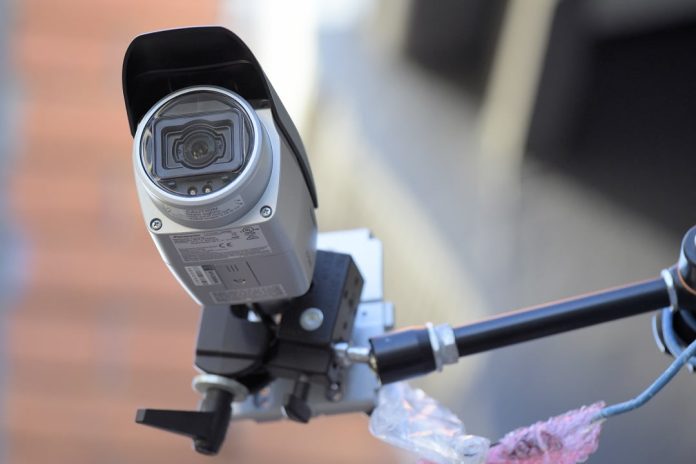Panasonic’s WV-S1550L bullet camera combines strong resolution with a mid-range optical zoom, making it a flexible solution on the street. The solid resolution makes digital zoom useful, too, while H.265 compression keeps bitrates to a minimum.
The Panasonic WV-S1550L bullet camera is a robust IP66/IK10/NEMA 4X-rated camera with H.265 compression, 120dB WDR, self-learning region of interest, a 1/2.8 type CMOS image sensor with 2560 x 1440-pixel (5.1MP) resolution, a 2.9-9 mm F1.3 lens (3.1x zoom) delivering 34–106 horizontal degrees of view and encrypted streaming to FIPS 140-2 Level 1 standards.
The camera features iA (intelligent auto), colour night vision (0.0044 to 0.07 lx) and 0 lux with the IR activated, auto shutter speed control for moving vehicles, region of interest, BLC and HLC settings and easy to navigate camera settings via Panasonic’s EasyIP setup and viewing software.

This unit is relatively compact at 377mm long, 133mm wide and 133mm high and it weighs 1.6kg without the adaptor box. In the hand the feel is good – the body is diecast aluminium and polycarbonate in Panasonic silver, fixings are of coated stainless and there’s a clear poly resin panel protecting the front element of the lens which looks to be coated in Magnesium Fluoride targeting the 550nm centre of the visible spectrum. Operating temperature is -30 to 60C.
There’s a collection of flying leads at the rear, which include RJ-45 for PoE and data. Features include backlight compensation, 8 levels of contrast, adjustable IR to a maximum of 40m, 8 privacy zones, Auto VIQS, integration microphone and audio compression options, including G.726 and G.711. Network options are extensive, and the camera supports 14 simultaneous users, SDXC/SDHC/SD card support, iOS and Android terminals, email notification, alarm inputs and outputs, maximum current draw of around 10A and 100 per cent resistance to condensation.
Driving the WV-S1550L
We are testing using SEN’s Optiplex 9020 server supported by a Netgear GS108P PoE switch running as a dedicated Gigabit network with nothing connected but the server. There’s a single uplink cable to the internet via a Meraki switch/firewall.
As I get started, I notice that a strength of this camera is the functional side. It has good focal range for a street application and using the optical zoom I can wind in and out of scenes quickly and easily. The re-focus is quick, too, and I use it after the camera has gone from night into day mode in the morning.
We start out inside and I immediately see that the camera does a nice job of colour rendition and handles backlight well. There’s about 8-9 per cent barrel distortion and I hop into settings and dial this out completely – nice. There’s a bit of smokiness in the image when things get bright through the glass backdoor – it’s certainly over exposure, as the camera is too far from the door to show veiling flare. A touch of chromatic aberration is evident along the window ledge.
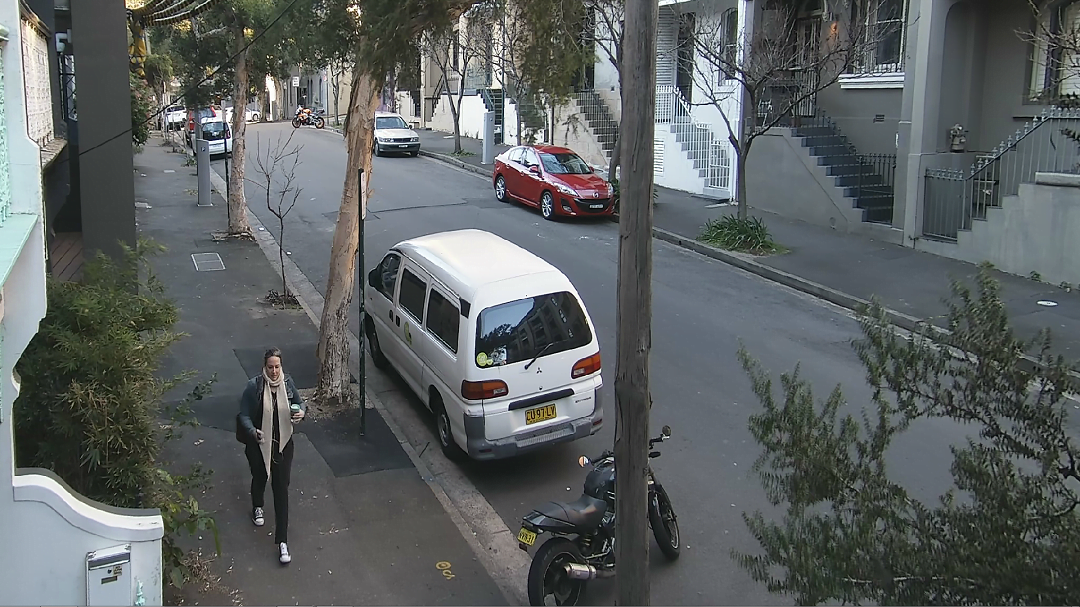
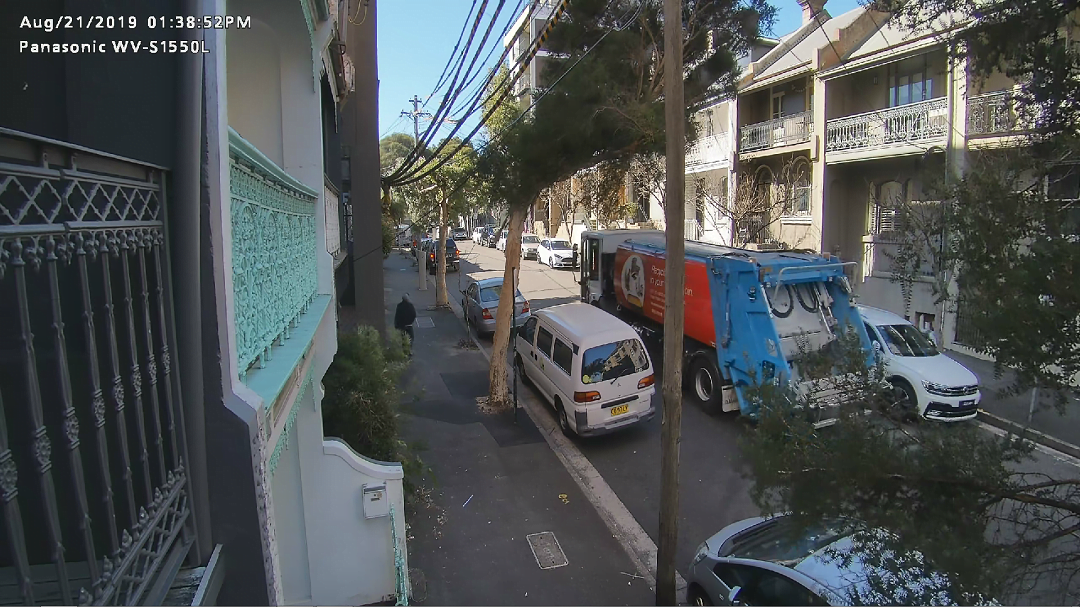
Great face recognition in the top image – this camera performs best with even lighting across the frame.
First impressions with the WV-1550L Bullet out the front are interesting. The camera manages the variable light in the scene by exposing for what’s closest to the camera in our application – that means the shutter speed drops to match the shady side of the street while image processing manages to keep things together in the brighter areas. I notice some trailing behind fast-moving objects in darker areas of the scene, but I don’t see any sign of the over exposure I saw inside the office.
It’s a windy day and there’s loads of tree movement with bamboo leaves 2 doors up showing partly as blur. I wonder whether it’s a product of camera settings or minimum shutter speed, which is default at 1/30sec. I try 1/100th of a second but can’t dial it out. The quirk is that this doesn’t seem to apply to faster moving plates in the brighter parts of the scene – even when the camera is severely stressed by backlight. Getting pedestrian trails and leaf blur in shadow and fast-moving plates in the sun from the same image stream is not what I was expecting. Something to note is that I have prioritised moving targets in camera settings and this function clearly works.
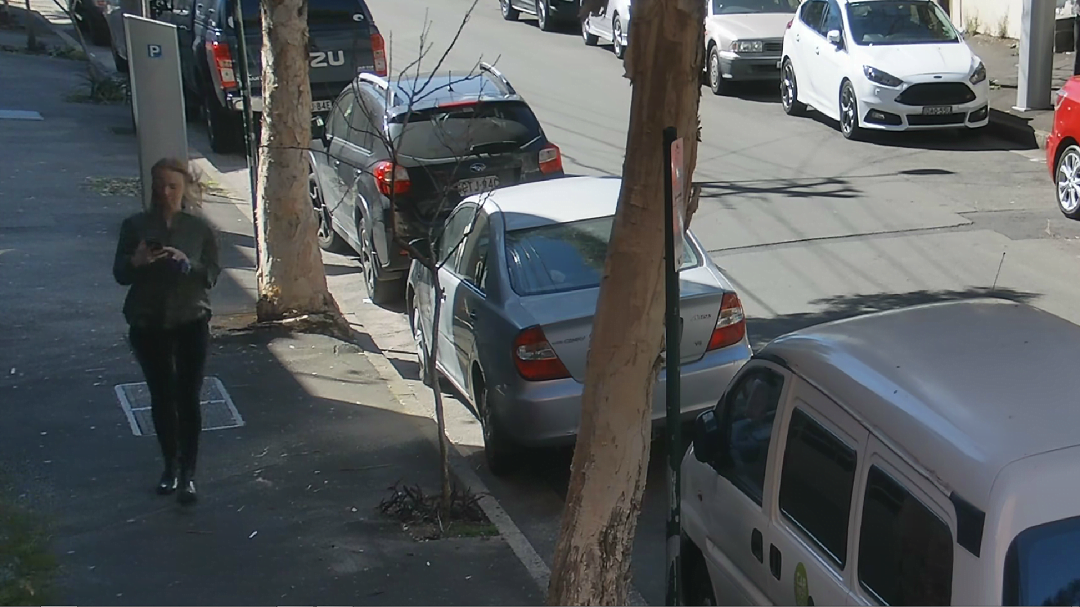
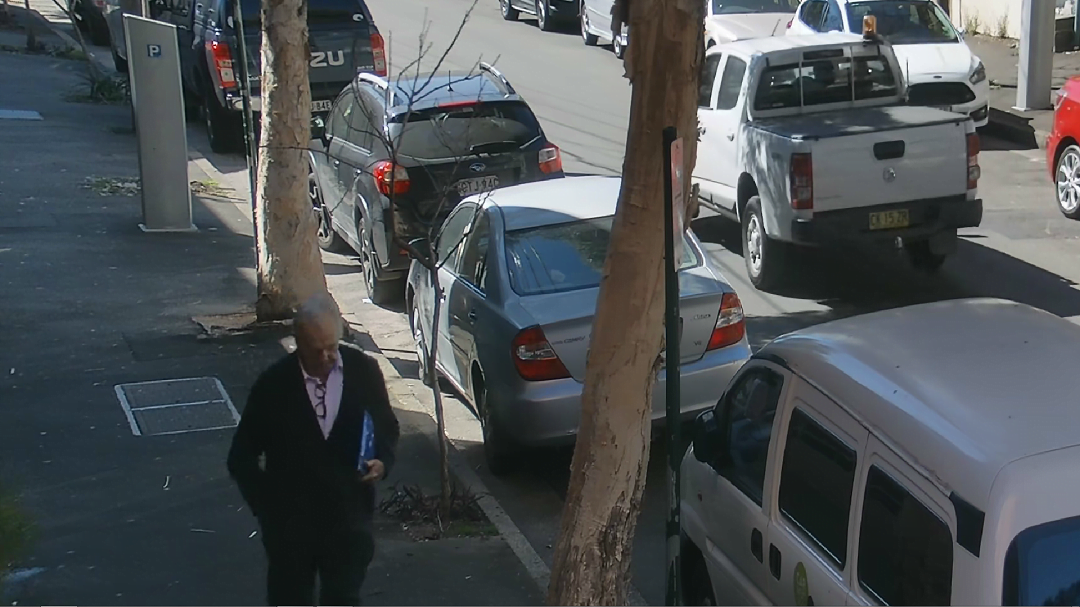
In scenes with bright and dark areas this camera retained the ability to snare plates though faces could pose a challenge.
Contrast is relatively low with colours slightly muted, yet I note good discernment with tones and good balance between light and dark areas of the scene with my chosen settings. There are no signs of over exposure throughout the test out front. There are some longitudinal chromatic aberrations around high contrast areas – I saw them inside the office, too – but they are not widespread, suggesting the quality of the lens is good. Because of the nature of this camera and the nature of my scene, I opt for a slightly longer focal length after a couple of days working with the camera – it’s probably 7.5mm, perhaps a little longer.
Resolution is strong and the 2560 x 1440-pixel (5.1MP) resolution gives me great digital zooming at wide end or long – you roll the mouse wheel to zoom digitally and click to either side and up and down to pan and tilt. This translates into good depth of field. At this focal length, I’m getting strong performance all the way across to the far side of Albion Street, where I find I can see clothing colours, gender, the presence of pets – including the fur colour of Surry Hills’ resident sheepadoodles.
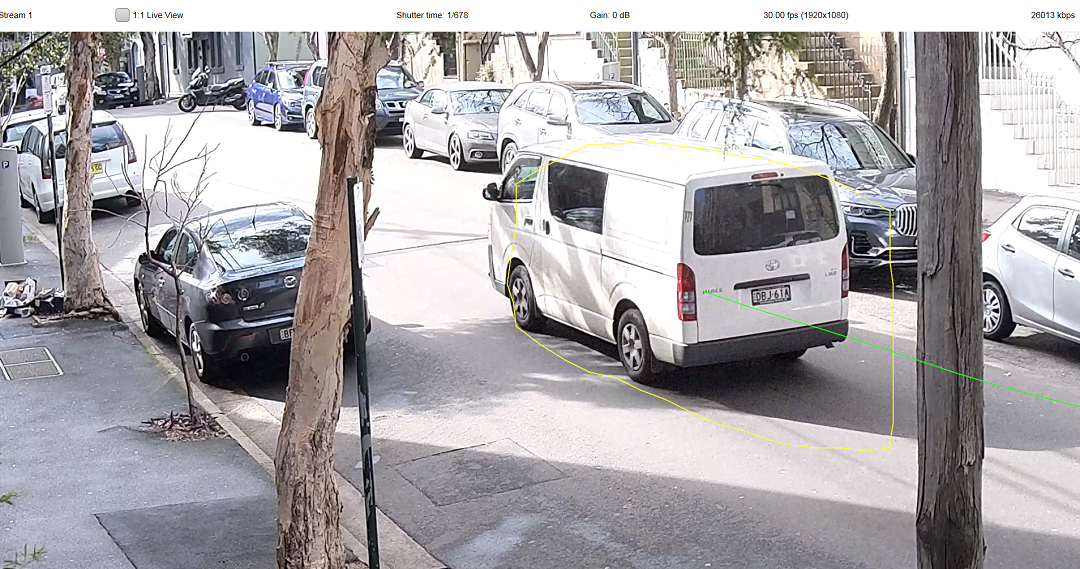
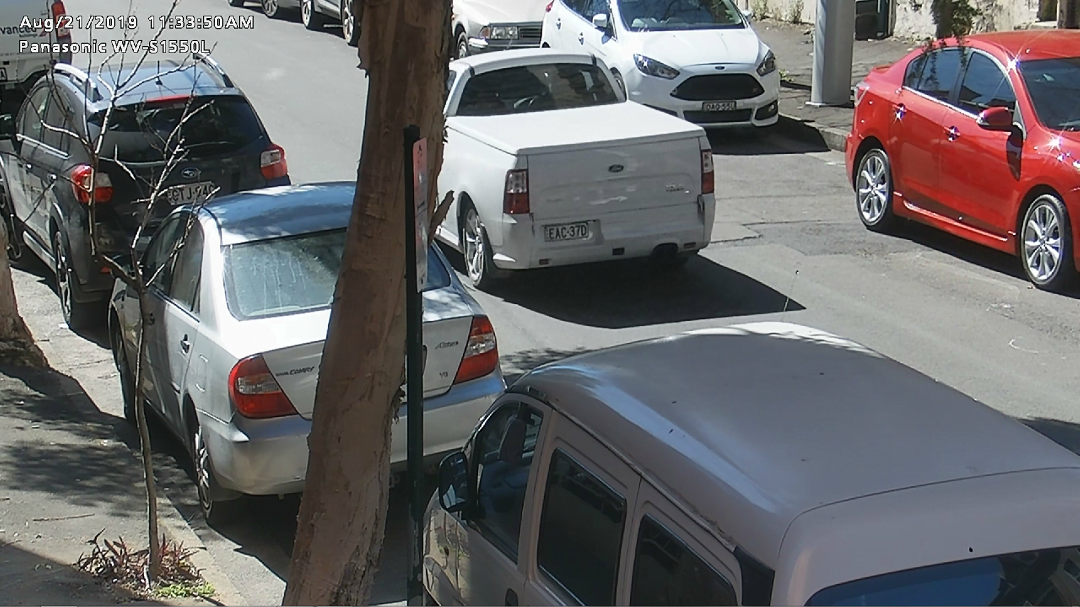
Jagging fast moving plates is a strength of the Panasonic WV-S1550L. Good face recognition with most the scene bright, too.
Live face recognition is good – I have it at various times from about 30 metres all the way to the bottom of the frame. There is a hint of softness in the image stream when lighting conditions are extreme and I work hard to make it go away, wondering if it’s tone mapping around moving objects or shutter speed, compression or economies of processing. Regardless, the camera persists in delivering sharp faces and moving plates in the middle of the scene in reasonable light, though I lose plates around 4pm in the afternoon.
As the test progresses into the second day and I play with settings over seeking the sweet spot, I end up opting for internal light control mode settings for my half bright-half shaded application, not external. The colour rendition and the light balance are better with these settings. A day or so later while playing with the camera I decide best performance when it comes to balance seems to be out of direct sunlight with the scene still relatively bright.
Next morning at about 11am I notice that the larger area of sunlight over the road is being exposed for while the near side of the street remains in shadow. The light is sufficiently strong at around 70,000 lux so that reflections from the light paint of buildings opposite are generating very mild internal reflections between the front panel of the housing and the front element of the lens. Next, I start working the zoom and find I have those all-important plates, as well as faces, at a good distance. As the sun disappears behind the towers, the shutter speed drops, and I get some blurring of pedestrian faces.
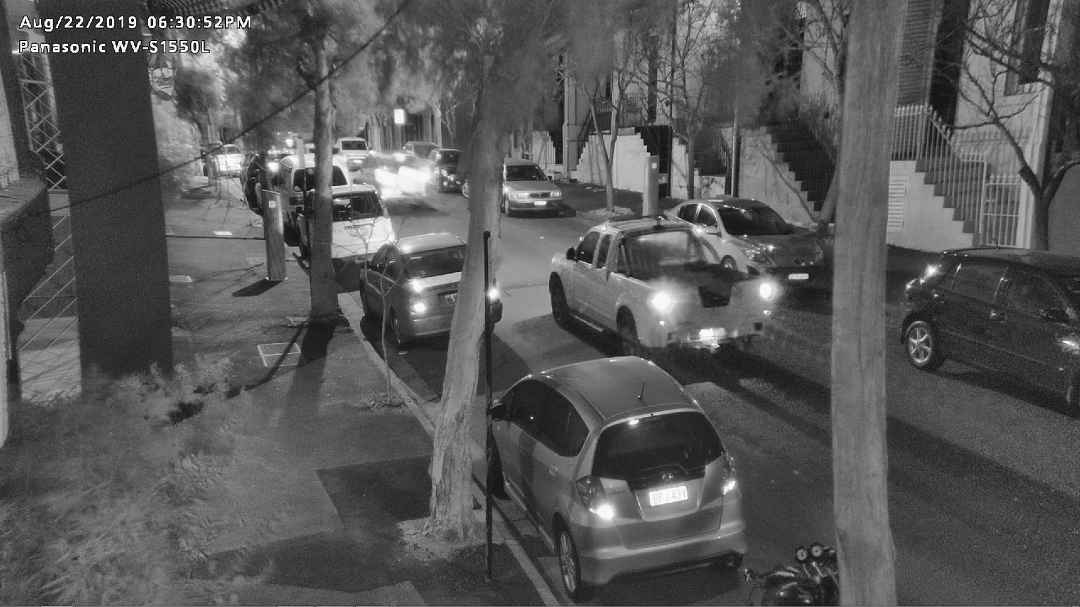
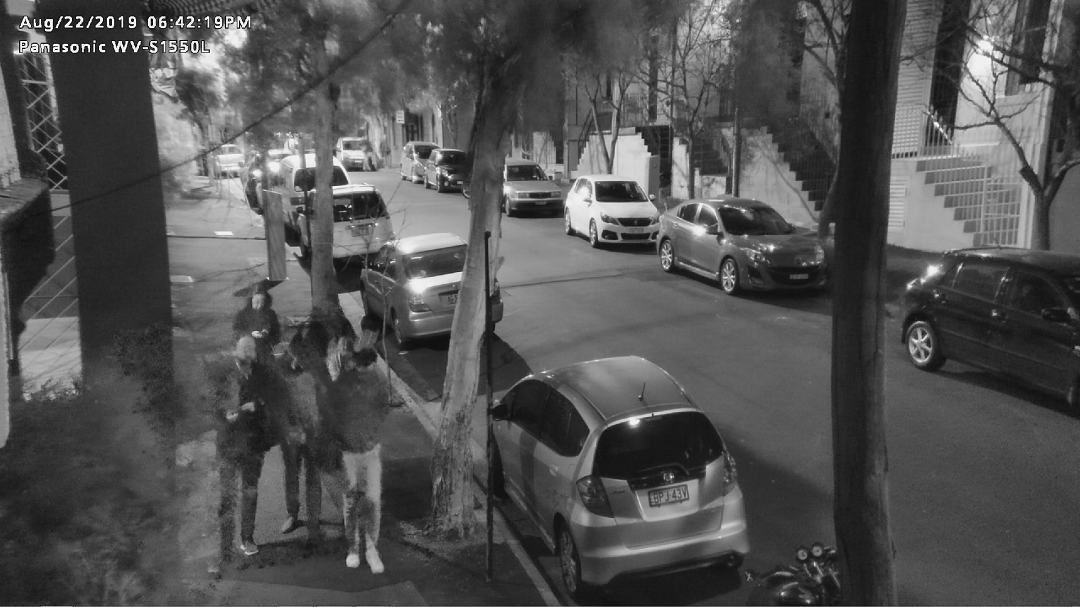
Night performance suggests the higher resolution of the sensor is having an impact – I’m not getting plates (I never do with any camera), and I’m not getting faces, either. Situational awareness is good but there are trails behind moving objects, which I work hard to eliminate but never quite can. I should point out that even at night these trails are cleaned up very quickly. There’s a little noise in the image stream – it’s amplification swim that pushes through as light levels fall. Depth of field stays strong, and I can see static plates with no difficulty. The camera handles blooming very well.
IR range is really strong – the specification says it’s 40 metres but it’s much more than that and it increases the contrast in the scene dramatically. With IR off, I still don’t get plates at night and I also notice that changing ambient light has an impact. When neighbouring motion-activated floodlights push up the ambient levels on the street (which are down to around 4 lux in places), the look of the image changes. I find night performance is better at the slightly longer 7.5mm focal length I adopted on the third day of testing. At less focal length I have pleasing depth of field – I’m certainly not going to miss anything in my field of view or depth of field, and I have all the static plates in the scene.
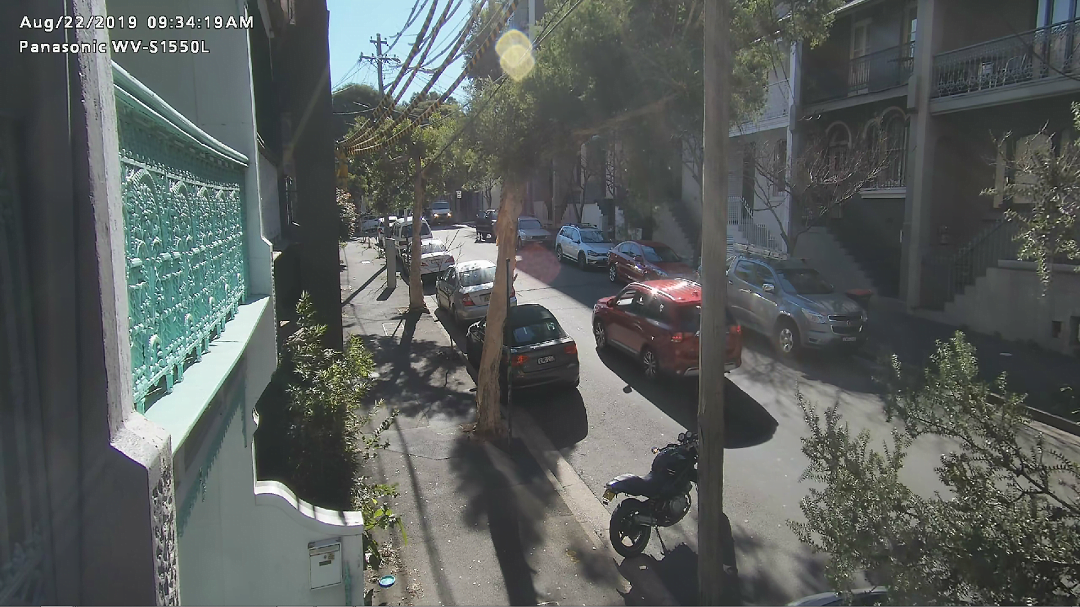
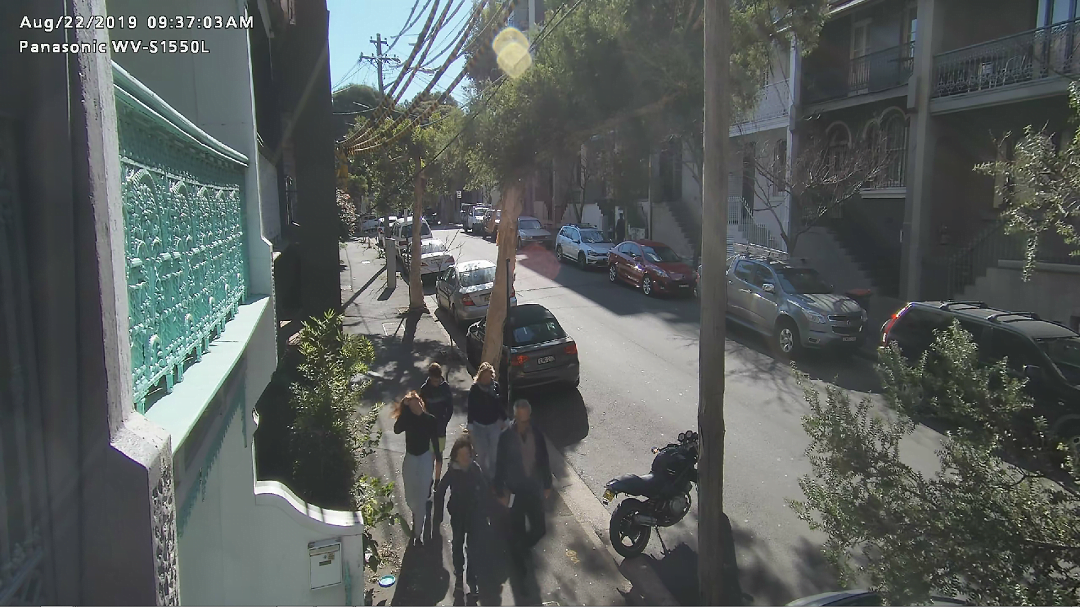
While I’m sitting at the office one night, I notice that as cars travel down the street they are pushing a slight bow wave of artefacts before them. This doesn’t seem to be motion blur but local (spatially varying) tone mapping. This would cause algorithmic changes in local pixels according to what was going on around them – a rapidly approaching car, for instance. Any local tone mapping algorithm will tend to show some halo, in part because local algorithms are so much more complex than global ones, and this would be especially likely around fast moving objects.
Next morning, I get onto the camera early and with intense backlight of 70,000 lux provoking a diamond shaped aperture star from the internal elements, I lose faces approaching the camera. With the appearance of cloud, the backlight eases and I get faces back. There’s no doubt this street scene is nasty – the time of year is also having an impact – the sun is much lower in the sky. I have the camera angle a touch higher than I sometimes do in order to get a good look down the street with the zoom activated.
Conclusion
Panasonic’s WV-S1550L is a robust and nicely proportioned bullet camera that rewards non-default settings with faces and plates at longer focal lengths all the way out to 30 metres or more. In my opinion, the image stream is stronger when scenes don’t have intense light variations. This camera has strong IR performance and thanks to its high resolution, there’s very good depth of field day and night. I tend to think the smaller photo sites of the high resolution 1/2.8-inch CMOS sensor have an impact on night performance in this application, thanks to some amplification noise and haloing, but the trade-off is much more detail during the day. Your application will decide which performance vectors matter most to you.
Features of the Panasonic WV-S1550L:
* 5MP images up to 30 fps
* iA (intelligent Auto)
* Super Dynamic 120dB
* Color night vision (0.0044 to 0.07 lx)
* H.265 Smart Coding
* 40m Integrated IR
* IK10, IP67, NEMA-4X



